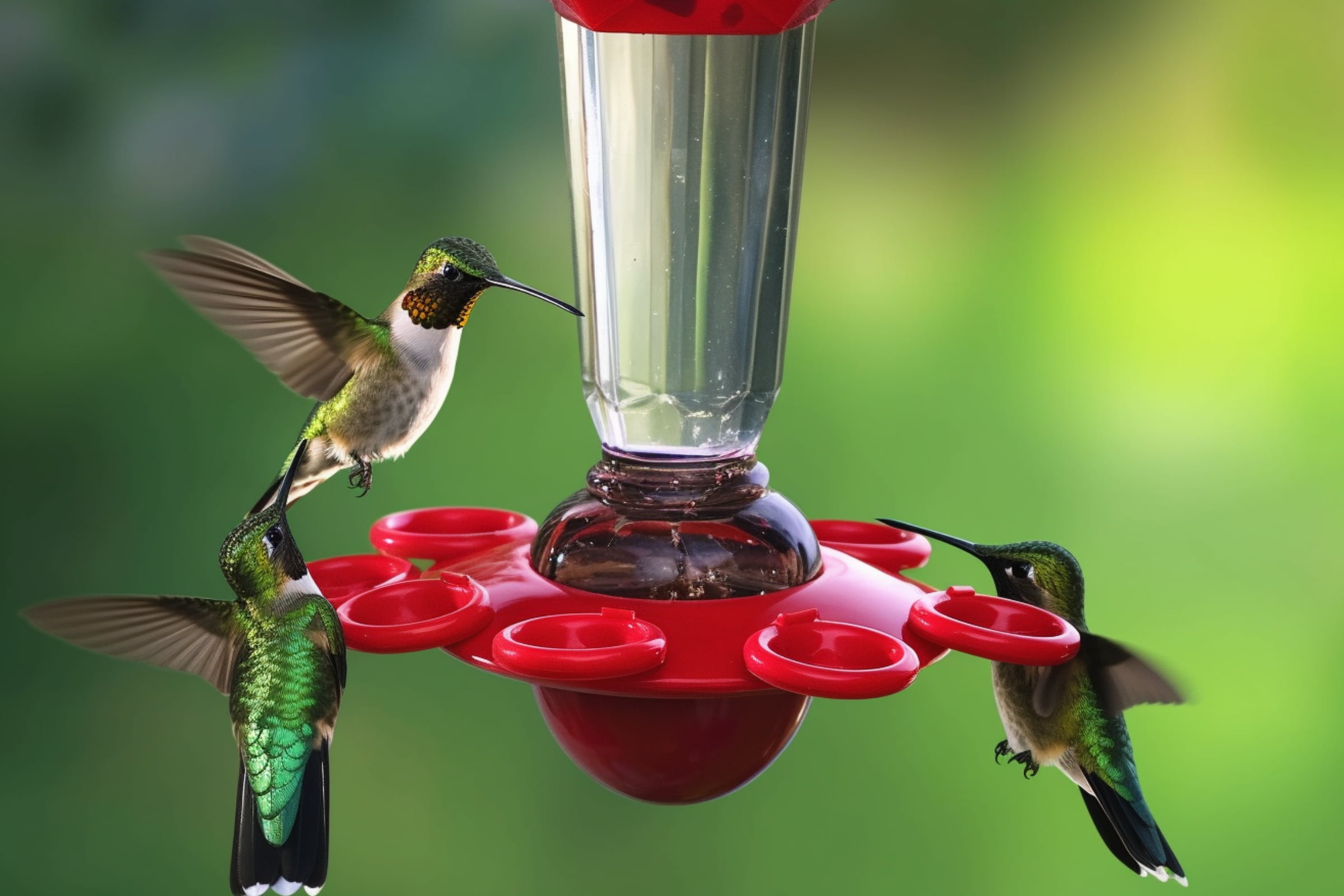The choice of food for your hummingbird feeder is a crucial decision for bird enthusiasts. Hummingbirds have unique dietary requirements that directly impact their health and well-being. To ensure the longevity and productivity of these birds, it is important to understand the type of food they need, its form, and how often to fill the feeder.
What Should You Put In Hummingbird Feeders?
To fill a hummingbird feeder, you can use a solution of water and sugar in a 4:1 ratio. This mixture replicates the natural nectar found in flowers and provides the necessary energy for hummingbirds’ high metabolism. To prepare the solution, boil water and dissolve white granulated sugar in it. Let the mixture cool to room temperature before filling the feeder. It is important to use white granulated sugar and avoid raw, brown, or artificial sweeteners as they can be harmful to hummingbirds. Adding red food coloring to the mixture is unnecessary and can also harm the birds.
In addition to sugar water, hummingbirds also require a source of protein, which they obtain from insects. If your area lacks natural insect sources, consider setting up a hummingbird feeder with live insects like mealworms to supplement their diet.
Are There Any Other Recipes For Hummingbird Feeders?
While the most common hummingbird feeder recipe is the 4:1 water-to-sugar ratio, some bird watchers use a slightly richer mix of 3:1 water-to-sugar ratio during spring and fall migrations. This provides extra fuel for the birds’ journey. However, be cautious with this mix as a higher sugar content can lead to faster fermentation and mold growth, especially in warmer weather. Therefore, more frequent cleaning and refreshing of the feeder would be necessary. It is important to note that simple sugar water mixes are the safest and most recommended option for feeding hummingbirds. Honey, artificial sweeteners, and red dye should never be used as they can be harmful to the birds.
How Often Should You Fill Your Hummingbird Feeder?
The frequency of refilling your hummingbird feeder depends on various factors such as geographical location, bird activity level, and time of year. During the peak season, typically the summer months, when hummingbird activity is high, it is advisable to replenish the feeder every two to three days to ensure a constant supply of nectar. As the cooler months approach and hummingbird activity decreases, refilling the feeder once a week or less frequently may be sufficient. The frequency of refilling is largely dependent on the number of hummingbirds visiting your yard during these cooler periods.
Are There Any Special Considerations When Filling My Hummingbird Feeder?
When filling your hummingbird feeder, there are a few special considerations to keep in mind:
- Use a solution of four parts water to one part white granulated sugar. Avoid using raw, brown, or artificial sweeteners as they can be harmful to the birds.
- Clean the feeder regularly, at least once a week, to prevent mold or bacteria growth. Empty any remaining solution and rinse the feeder with hot water or use a mild soap or vinegar solution for thorough cleaning.
- Avoid adding red food coloring to the sugar water as it is unnecessary and can be harmful to the birds.
- Consider the weather when filling your feeder. In hot weather, refill the feeder more frequently to prevent spoilage. In cold weather, the solution may need to be changed less often due to slower fermentation.
- If natural insect sources are scarce in your area, consider setting up a hummingbird feeder with live insects like mealworms to supplement their diet.
These considerations will help ensure the safety and health of the hummingbirds feeding from your feeder.
Conclusion
Understanding the type of food and the frequency of filling your hummingbird feeder is crucial for providing the necessary nutrition to these birds while avoiding potential health risks. By paying attention to these details, you can create a safe and healthy environment for hummingbirds to thrive.
